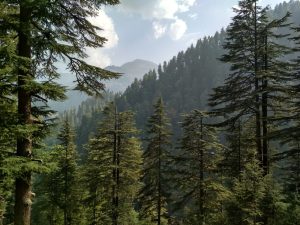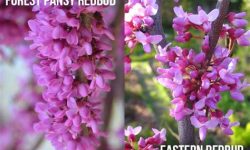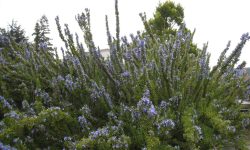Cypress Vs Cedar Trees
If you’re in the market for trees to add to your landscape, you may be considering the classic choices of cypress and cedar. Each tree has its own unique set of characteristics, growth habits, and pros and cons that make them suitable for different environments and purposes. In this blog post, we will explore the key traits of cypress trees and cedar trees, including their physical characteristics and growth habits. Additionally, we will delve into the pros and cons of choosing either cypress or cedar for your specific landscaping needs. By the end of this post, you’ll have a better understanding of which tree is the right choice for your outdoor space. So, let’s take a closer look at the distinctions between cypress and cedar trees to help you make an informed decision.
Characteristics of Cypress Trees
Cypress trees are known for their tall, straight trunks and conical shape, reaching heights of up to 80 feet or more. Their leaves are scale-like and arranged in feathery foliage, giving the tree a delicate and graceful appearance. Cypress trees also have a distinctive gray-brown bark that furrows and peels in long strips, adding to their unique aesthetic appeal.
One of the most notable characteristics of cypress trees is their adaptability to various environments. They can grow in wet, swampy areas as well as dry, rocky soil, making them a versatile choice for landscaping in a wide range of climates and terrains.
In addition to their aesthetic and adaptable qualities, cypress trees are also known for their longevity and durability. They are highly resistant to decay and rot, making them a popular choice for building materials and outdoor furniture. Their dense wood is also known for its natural insect-repellent properties, further enhancing their appeal in construction and landscaping.
Overall, the characteristics of cypress trees make them a highly sought-after tree species for both ornamental and practical purposes. Their unique shape, adaptable nature, and durable wood make them a valuable addition to any landscape or building project.
Characteristics of Cedar Trees
Cedar trees are known for their strong, fragrant wood that is used for a variety of purposes, including furniture, decking, and siding. These trees are typically tall and straight, with a conical or pyramidal shape that tapers as it reaches the top. The foliage of cedar trees is typically dark green, with scale-like leaves that are arranged in an overlapping pattern. In addition to their strong wood, cedar trees are also known for their distinctive aroma, which can repel insects and provide a pleasant scent to outdoor spaces.
Another characteristic of cedar trees is their resistance to decay and rot. The wood of the cedar tree contains natural preservatives that make it highly durable, even when exposed to the elements. This resistance to decay makes cedar a popular choice for outdoor construction and landscaping projects, as it can withstand moisture and weathering without deteriorating.
Cedar trees also have a long lifespan, with some specimens living for hundreds of years. This longevity contributes to the sustainability of cedar wood products, as trees can be harvested without depleting the population. Additionally, cedar trees are known for their environmental benefits, as they provide habitat for wildlife and contribute to soil stability and erosion control.
Overall, the characteristics of cedar trees make them highly desirable for a variety of purposes, from construction to landscaping to environmental conservation. Their strength, durability, and natural resistance to decay make them a valuable and sustainable resource for both human use and ecosystem health.
Growth Habits of Cypress Trees
Cypress trees are known for their tall, straight trunks and conical shape. They have a strong root system that allows them to thrive in wet, swampy areas, making them a popular choice for landscaping in these types of environments. Cypress trees also have a tendency to develop knees, which are woody projections that grow out of the roots and can provide additional stability in the wet soil.
These trees are slow-growing, but they can reach impressive heights over time. They are also long-lived, with some cypress trees living for hundreds of years. Their foliage is typically a dark green color, and they produce small, round cones that add visual interest to the tree.
In terms of habitat, cypress trees are adaptable and can tolerate a range of growing conditions. They are often found growing near bodies of water, such as rivers, lakes, and swamps. Cypress trees are also prized for their ability to withstand flooding, making them a resilient choice for planting in flood-prone areas.
Overall, the growth habits of cypress trees make them a versatile and attractive option for landscaping, particularly in wet or swampy areas. Their unique features and ability to thrive in challenging environments make them a popular choice for homeowners and landscapers alike.
Growth Habits of Cedar Trees
Cedar trees are known for their tall, straight trunks and pyramid-shaped crowns. They have a unique growth habit that sets them apart from other trees. These trees can grow to be quite tall, sometimes reaching heights of over 100 feet. They are also quite hardy and can survive in a variety of soil conditions, from dry, rocky terrain to wet, swampy areas.
The growth rate of cedar trees is relatively slow compared to other tree species. They can take several years to reach maturity and may not start producing cones or seeds until they are at least 10-20 years old. However, once they reach maturity, cedar trees can live for a very long time, sometimes hundreds of years.
One interesting thing about the growth habits of cedar trees is their ability to thrive in different climates. They are often found in mountainous regions, where they are exposed to harsh winds and cold temperatures. This has caused them to develop a unique growth pattern that allows them to bend and flex in response to strong winds, helping them to survive in these challenging environments.
Overall, the growth habits of cedar trees make them a unique and impressive species. Their ability to thrive in a variety of conditions, their long lifespan, and their distinctive growth pattern all contribute to their appeal as a tree species.
Pros and Cons of Choosing Cypress or Cedar
When it comes to landscaping and outdoor projects, selecting the right type of cypress or cedar can make a significant difference. Both of these wood varieties have their own unique benefits and drawbacks, and it’s important to weigh them carefully before making a decision.
One of the primary advantages of choosing cypress is its natural resistance to decay, making it an excellent choice for outdoor furniture, fences, and other outdoor structures. Cedar, on the other hand, is also naturally resistant to rot and insect infestation, which makes it a popular choice for use in decks and siding.
However, it’s worth noting that cypress tends to be a bit more affordable than cedar, which can make it a more budget-friendly option for those working on a tight budget. On the other hand, cedar has a naturally beautiful appearance with its reddish-brown hue, which can add an attractive aesthetic to any outdoor project.
On the downside, both cypress and cedar are softwoods, which means they are more prone to scratches and dents compared to hardwood options. Additionally, cypress is known to have a strong, distinctive aroma, which can be a bit overwhelming for some individuals, while cedar has the potential to cause allergic reactions in some people due to its natural oils.
Frequently Asked Questions
What are the characteristics of cypress trees?
Cypress trees are known for their tall, straight trunks, scale-like leaves, and woody cones.
What are the characteristics of cedar trees?
Cedar trees typically have a pyramid shape, needle-like leaves, and produce small, woody cones.
How do cypress trees grow?
Cypress trees thrive in wet, swampy areas and are often found near water sources.
How do cedar trees grow?
Cedar trees prefer well-drained soil and are often found in mountainous or rocky terrain.
What are the pros and cons of choosing cypress trees?
Some pros of cypress trees include their durability and resistance to decay, while a con may be their potentially high cost.
What are the pros and cons of choosing cedar trees?
Cedar trees are known for their natural resistance to rot and insects, but may be more expensive and prone to splitting.
Which tree is better for my landscaping needs, cypress or cedar?
Your choice between cypress or cedar will depend on your specific needs and the environmental conditions of your location.




